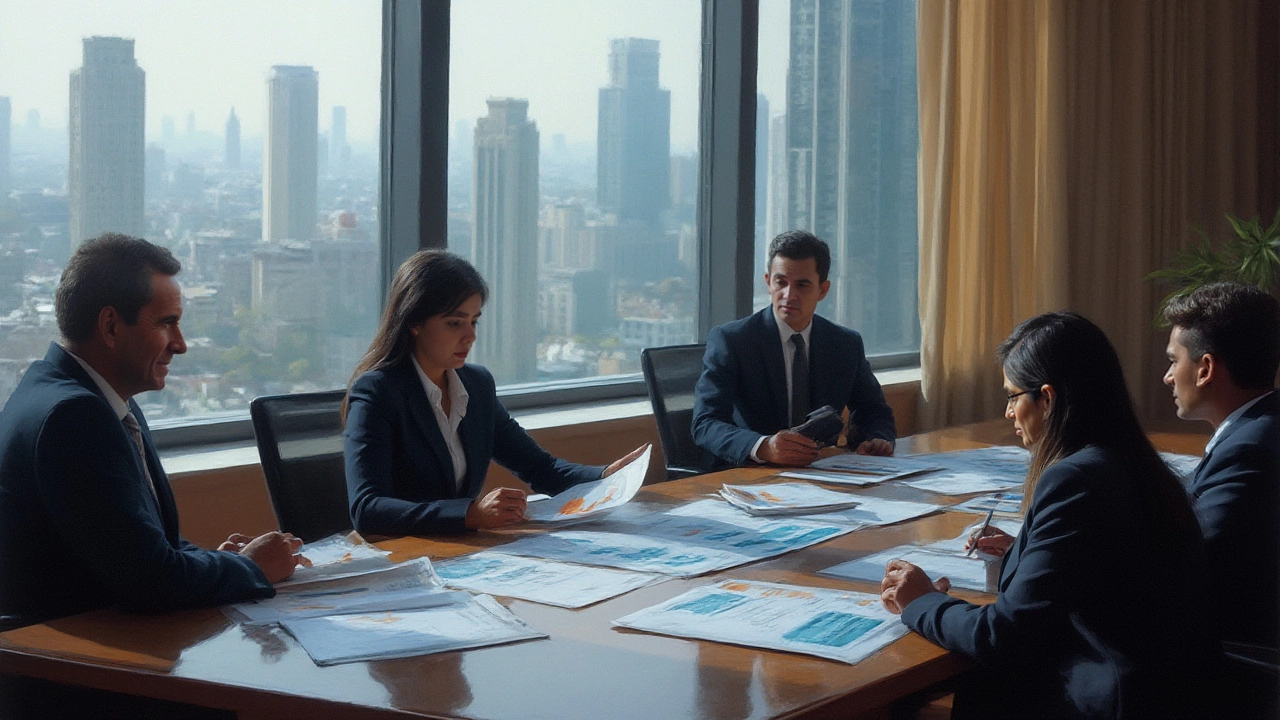The number everyone chases in commercial real estate isn’t flashy decor or a fancy logo out front—it’s the rate of return. It’s the heart and soul of every property deal. Here’s something that might surprise you: what counts as a “good” rate of return isn’t just a single number. It hangs on market trends, location details, property type, risk appetite, and your own strategy. You’ll hear folks in the industry throwing around terms like cap rate, cash-on-cash, IRR, and yield, but at the end of the day, it’s about what ends up in your pocket versus what you put down. Ready to cut through the noise? Let’s get into the numbers, real benchmarks, and how to know when you’re getting a fair shake or walking into a money pit.
Understanding Rate of Return in Commercial Property
The way you measure a rate of return in commercial property isn’t just an academic exercise. This is the number that often decides whether you retire early or chalk up another long list of lessons learned. The most common figure thrown around is the capitalization rate—cap rate for short—which calculates your net operating income divided by the property’s price. Realistically, in 2025, U.S. and European markets see average cap rates for prime office or retail properties hovering between 5% and 7%. Warehouses and industrial spaces sometimes creep higher, at 7% to 8%, because there’s more uncertainty around tenants and area growth.
Beyond cap rates, savvy investors also care about cash-on-cash return, because that tells you what you’re actually putting in your wallet each year compared to your cash investment. For anyone using leverage (and almost everyone does), this number can jump ahead of your cap rate—sometimes even hitting 10% to 12% in high-risk deals, but rarely below 4% in very conservative city-center properties. IRR adds another wrinkle, because it factors in the timing and size of all the money you earn. Strong portfolios often show IRRs in the 12% to 18% range, but that requires a lot of moving pieces working out just right: rent increases, full occupancy, timely sales, and (usually) a bit of luck too.
Not all returns are created equal, though. An 8% yield in Miami might mean wild market swings and tenant turnover, while a 6% return in suburban Munich could feel almost boring—steady rents, long-term businesses, and little drama. Don’t be fooled into thinking higher numbers always mean better. Sometimes, higher returns are just the market’s way of dangling a carrot—while quietly hiding the stick.
Factors That Affect Your Rate of Return
The juicy part about commercial property returns is all the variables working behind the curtain. Let’s start simple: location and tenant quality are usually the biggest factors. A high-profile corner property in London or New York will carry a lower rate of return (think 3.5% to 5%) because investors pile in, chasing certainty and prestige. On the flip side, lesser-known cities or edges of hot up-and-coming towns might show cap rates north of 8%, especially if there’s a risk the area could stall or the anchor tenant checks out early.
But location isn’t the only factor at play. Take property type—industrial, office, retail, multifamily, or specialty (like hotels or self-storage). Since the pandemic’s work-from-home shakeup, offices in midsize cities saw rates of return increase by at least 1% to 1.5% to attract new investors. Meanwhile, warehouse and logistics spaces surged in popularity, tightening returns as everyone tried to grab a slice of the e-commerce pie. If you’re eyeing malls versus distribution centers, expect very different sets of risks and rewards.
Let’s not skip the influences of financing and market cycles. Financing costs went up a lot in 2024 as interest rates rose; suddenly, those who bought with cheap debt in 2021 looked pretty savvy. Net returns for newcomers dropped as average mortgage rates peaked around 7.5% for investor loans. Maintenance costs, property taxes, and regional rent controls can also mess with your bottom line. Let’s lay out some sample figures:
| Property Type | Average Cap Rate (2025) | Typical Cash-on-Cash (2025) |
|---|---|---|
| Prime Office (Tier-1 city) | 4%-5.5% | 3.5%-6% |
| Retail (City Core) | 5.5%-6.5% | 5%-8% |
| Industrial | 6.5%-8% | 7%-12% |
| Multi-family | 5%-6.5% | 5%-8.5% |
| Specialty (Storage, Hotel) | 6.5%-9% | 6%-12% |
One thing’s for sure: the more moving parts in your deal, the more diligent you need to be with your math.

Benchmarks: What Do Investors Consider a 'Good' Rate?
Alright, so what number should make you sit up and listen? First, there’s no one-size-fits-all answer. Institutional funds might get giddy for a stable 5% yield if it’s on a big office complex with a blue-chip tenant locked in for 15 years. The small-time investor who poured his or her savings into a strip mall in Oklahoma might not even look at deals under 9% because of vacancy worries. That said, most individual investors in 2025 want to see at least a rate of return of 6% to 8% on stabilized assets, or 9% to 12% on projects needing upgrading or heavy repositioning.
If you’re eyeing syndications or crowdfunding deals, the pitch often promises 10% to 14% targeted IRR—but a study by Preqin in May 2025 found the actual average paid out to investors was closer to 8% to 9%. Real estate investment trusts (REITs), which provide super-diversified exposure, usually land in the 5% to 7% average range, depending on sector and management.
Here’s a gut check: the "good" rate of return isn’t just about outscoring your friend or the index fund you could have bought. What’s your risk, how stable is the cash flow, and who’s managing the place? For me, a good deal feels like a mix of steady income and a realistic plan for rising rents or increasing property values—without sweating over what might break next or hunting down flaky tenants. This is where crunching the numbers, checking your local stats, and looking at recent sales comps will give you the best read on whether a deal’s worth chasing—or dodging like a bad movie sequel.
Smart Tips for Landing the Right Return
Chasing a "good" rate of return is less about grabbing the biggest number and more about how you stack the odds in your favor. Here’s what helps: don’t skip due diligence. Double-check leases, rent rolls, and neighborhood vacancy rates. If the numbers seem too rosy, dig deeper—sometimes the profits come from not overpaying on day one. When I scout properties, I treat each investment like my kid Fern treats a new game: check all the rules, poke at the edges, and never assume the box cover tells the whole story.
- Start with current market averages—use those as your first baseline. If the cap rate is much higher than similar properties, ask why. High returns can be a red flag.
- Look at tenant quality and lease length; five-year triple-net leases (where tenants pay most expenses) often mean fewer headaches and reliable income.
- Factor in ALL costs—not just the flashy "projected rent." Add in vacancy estimates and capital reserves. A lot of returns die a slow death from repairs nobody budgeted for.
- Don’t bank on big appreciation to hit your return goal. Treat rent increases and eventual sale price as a nice bonus, not the main meal.
- Review recent sales of similar properties and check public records. Sometimes the best data comes from what others actually paid and earned—not the promises on glossy brochures.
If you’re new, consider teaming up with seasoned investors. That’s a fast way to spot traps and avoid beginner mistakes. Even now, after years in the trenches and more than a few late-night calculations, I lean on mentors for figures and gut checks. Returns in commercial property are never just about luck or timing; they’re a mix of skill, patience, and picking your battles wisely. Get those right, and suddenly, "good" isn’t just a number—it’s your own strategy paying off.

